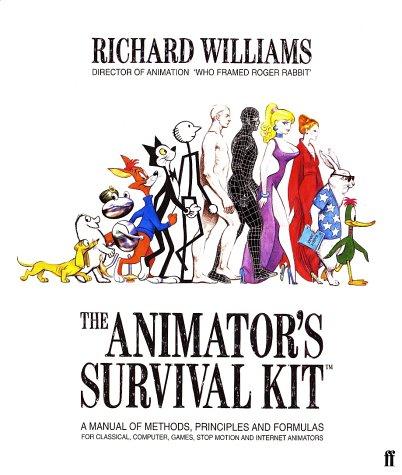
智能视感学-英文版
书刊介绍
智能视感学-英文版 内容简介
本书从计算机视感及其信号处理的基本概念与基础理论出发,阐述了基于图像信息的识别、理解与检测技术原理与方法。本书根据作者多年来从事智能视感理论与技术研究成果,结合研究性本科与研究生教学特点编撰而成。全书分为基础篇与应用篇两大部分,其中,基础篇系统地介绍了智能视感的基本原理、方法、关键技术及其算法;应用篇则由配合主要基础理论和方法的应用技术实例所组成。全书遵循理论知识与实用技术的紧密结合、数学方法与实用效果的相互映证等编写原则。本书可以作为检测与控制、自动化、计算机、机器人及人工智能等专业的高年级本科生和研究生的教材,也可作为专业技术人员的参考工具书。
智能视感学-英文版 本书特色
《智能视感学(英文版)》作者张秀彬、曼苏乐根据自己和博士、硕士生们的研究成果,结合多年从事本科生及研究生的教学经验与体会整理出这本教材,将其定名为《智能视感学》。考虑到目前在该学科方向上尚缺乏较为浅显易懂、又能形成体系的简明教程,作者想做一次尝试,希望能用一种较为通俗和深入浅出的方法来阐述智能视感的一些深奥知识,对初学者能够起到入门和建立继续深造的起点之作用。这是一本基于图像信息的非接触式传感理论的技术书。教材中所阐述的内容涉及到图像识别、视差原理、计算几何原理、计算机图像图形学,乃至人类对自然界认识的诸多先验知识如何与视感检测相结合的方法和技术问题。因此,本书是一本多学科交叉的较为前沿的大学研究型教材。
智能视感学-英文版 目录
ForewordPrefaceBase articleChapter 1Introduction1.1Overview1.1.1Concept about the Visual Perception1.1.2The Development of Visual Perception Technology1.1.3Classification of Visual Perception System1.2A Visual Perception Hardware-base1.2.1 iImage Sensing1.2.2Image Acquisition1.2.3PC Hardware Requirements for VPSExercisesChapter 2Foundations of Image Processing2.1Basic Processing Methods for Gray Image2.1.1Spatial Domain Enhancement Algorithm2.1.2Frequency Domain Enhancement Algorithm2.2Edge Detection of Gray Image2.2.1Threshold Edge Detection2.2.2Gradient-based Edge Detection2.Z.3Laplacian Operator2.2.4Canny Edge Operator2.2.5Mathematical Morphological Method2.2.6Brief Description of Other Algorithms2.3Binarization Processing and Segmentation of Image2.3.1General Description2.3.2Histogram-based Valley-point Threshold Image Binarization2.3.3OTSU Algorithm2.3.4Minimum Error Method of Image Segmentation2.4Color Image Enhancement2.4.1Color Space and Its Transformation2.4.2Histogram Equalization of Color Levels in Color Image2.5Color Image Edge Detection2.5.1 Color Image Edge Detection Based on Gradient Extreme Value2.5.2Practical Method for Color Image Edge DetectionExercisesChapter 3Mathematical Model of the Camera3.1Geometric Transformations of Image Space3.1.1 Homogeneous Coordinates3.1.2Orthogonal Transformation and Rigid Body Transformation3.1.3Similarity Transformation and Affine Transformation3.1.4Perspective Transformation3.2Image Coordinate System and Its Transformation3.2.1Image Coordinate System3.2.2Image Coordinate Transformation3.3Common Method of Calibration Camera Parameters3.3.1Step Calibration Method3.3.2Calibration Algorithm Based on More than One Free Plane3.3.3Non-linear Distortion Parameter Calibration MethodExercisesChapter 4Visual Perception Identification Algorithms4.1Image Feature Extraction and Identification Algorithm4.1.1Decision Theory Approach4.1.2Statistical Classification Method4.1.3Feature Classification Discretion Similarity about the Image Recognition Process4.2Principal Component Analysis4.2.1Principal Component Analysis Principle4.2.2Kernel Principal Component Analysis4.2.3PCA-based Image Recognition4.3Support Vector Machines4.3.1 Main Contents of Statistical Learning Theory4.3.2Classification-Support Vector Machine~4.3.3Solution to the Nonlinear Regression Problem4.3.4Algorithm of Support Vector Machine4.3.5Image Characteristics Identification Based on SVM4.4Moment Invariants and Normalized Moments of Inertia4.4.1Moment Theory4.4.2Normalized Moment of Inertia4.5Template Matching and Similarity4.5.1Spatial Domain Description of Template Matching4.5.2Frequency Domain Description of Template Matching4.6Object Recognition Based on Color Feature4.6.1Image Colorimetric Processing4.6.2Construction of Color-Pool4.6.3Object Recognition Based on Color4.7Image Fuzzy Recognition Method4.7.1Fuzzy Content Feature and Fuzzy Similarity Degree4.7.2Extraction of Fuzzy Structure4.7.3Fuzzy Synthesis Decision-making of Image MatchingExercisesChapter 5Detection Principle of Visual Perception5.1Single View Geometry and Detection Principle of Monocular Visual Perception5.1.1Single Vision Coordinate System5.1.2Basic Algorithm for Single Vision Detection5.1.3Engineering Technology Based on Single View Geometry5.2Detection Principle of Binocular Visual Perception5.2.1Two-view Geometry and Detection of Binocular Perception5.2.2Epipolar Geometry Principle5.2.3Determination Method of Spatial Coordinates5.2.4Camera Calibration in Binocular Visual Perception System5.3Theoretical Basis for Multiple Visual Perception Detection5.3.1Tensor Geometry Principle5.3.2Geometric Properties of Three Visual Tensor5.3.3Operation of Three-visual Tensor5.3.4Constraint Matching Feature Points of Three-visual Tensor5.3.5Three-visual Tensor Restrict the Three Visual Restraint Feature Line' s MatchingExercisesApplication articleChapter 6Practical Technology of Intelligent Visual Perception6.1Automatic Monitoring System and Method of Load Limitation of The Bridge6.1.1The Basic Composition of The System6.1.2System Algorithm6.2Intelligent Identification System for Billet Number6.2.1System Control Program6.2.2Recognition Algorithm6.3Verification of Banknotes-Sorting Based on Image Information6.3.1Preprocessing of the Banknotes Image6.3.2Distinction Between Old and New Banknotes6.3.3Distinction of the Denomination and Direction of the Banknotes6.3.4Banknotes Fineness Detection6.4Intelligent Collision Avoidance Technology of Vehicle6.4.1Basic Hardware Configuration6.4.2Road Obstacle Recognition Algorithm6.4.3Smart Algorithm of Anti-collision to Pedestrians6.5Intelligent Visual Perception Control of Traffic Lights6.5.1Overview6.5.2The Core Algorithm of Intelligent Visual Perception Control of Traffic LightsExercisesAppendixLeast Square and Common Algorithms in Visual Perception DetectionI.1Basic Idea of the AlgorithmI.2Common Least Square Algorithms in Visual Perception DetectionI.2.1 Least Square of Linear System of EquationsI.2.2Least Square Solution of Nonlinear Homogeneous System of Equations Theory and Method of BAYES Decision II.1Introduction II.2BAYES Classification Decision Mode II.2.1BAYES Classification of Minimum Error Rate II.2.2BAYES Classification Decision of Minimum RiskIIIStatistical Learning and VC-dimension TheoremIII.1Bounding Theory and VC-dimension PrincipleIII.2Generalized Capability BoundingIII.3Structural Risk Minimization Principle of InductionIVOptimality Conditions on Constrained Nonlinear Programming ProblemIV.1Kuhn-Tucker ConditionIV.1.1Gordon LemmaIV.1.2Fritz John TheoremIV.1.3Proof of the Kuhn-Tucker ConditionIV.2Karush-Kuhn-Tucker ConditionSubject IndexReferences相关推荐
-

语文必读丛书:罪与罚
语文必读丛书:罪与罚 本书特色 《罪与罚》是陀斯妥耶夫斯基*伟大的代表作之一,一部揭示人物内心道德冲突、善恶交替的心理小说,是作家完全走想独创性的一个成熟的标志...
-

幸福王子(英汉对照读物)
幸福王子(英汉对照读物) 本书特色 王尔德的童话想像奇特,讲究结构,语言诗化,把人间的悲剧美、病态美、内在美等表现得淋漓尽致,在阐述他的唯美主义的同时,也给人们...
-

成长必读-彼得兔的故事(儿童注音美绘本)
成长必读-彼得兔的故事(儿童注音美绘本) 本书特色 本书收录了毕翠克丝·波特具有代表性的童话作品,这些童话故事妙趣横生,字里行间都洋溢着友情和爱心...
-

大学物理
大学物理 本书特色 本书是根据国家教育部《高等学校非物理专业物理课程教学基本要求》,为了适应科学技术的发展,在结合笔者多年的教学实践的基础上编写的本科物...
-

少年维特的烦恼
少年维特的烦恼 本书特色 《少年维特的烦恼》以维特与绿蒂之间的爱情为主线,向读者展示了广阔的社会生活全景图,对当时德国各个阶层的人与人之间的关系进行了深刻的剖析...
-

侵权责任法-(第三版)
侵权责任法-(第三版) 本书特色 《21世纪法学系列教材:侵权责任法(第3版)》分为侵权责任法总论、对自己加害行为的侵权责任、准侵权行为责任和无过错责任与过错推...
-

自然之数-数学想象的虚幻实境
自然之数-数学想象的虚幻实境 本书特色 几个世纪以来,数学家们用集体的智慧创造了一个独特的世界,使人类对周围的世界有了许多深刻的认识。《自然之数:数学想象的虚幻...
-

一个军的传奇
《一个军的传奇》内容简介:解放军哪个军的军史最长?军迷们的结论是50军!它的前身是国民党的60军,60军的前身是云南的滇军,如此
-

职业教育十大热点问题
《职业教育十大热点问题》内容简介:当前职业教育的发展还面临着一系列问题,本书在对全国职业教育院校进行网络调查、实地调研、院
-

高二分册-写人记叙文.议事论辨文-古文对话百八篇
高二分册-写人记叙文.议事论辨文-古文对话百八篇 本书特色 本书为高中二年级学生学习古文的课外读物,内容包括:五柳先生传附论、六一先生传、段太尉逸事状、大铁锤传...
-

三国故事-林汉达中国历史故事经典-(全2册)-图文本
三国故事-林汉达中国历史故事经典-(全2册)-图文本 本书特色 这是一部连续的历史故事集。《图文本林汉达中国历史故事经典—三国故事》,以《左传》、《史记》等正史...
-

中国人学德语
中国人学德语 本书特色 一本小清新的德语入门书,全彩印刷,精致悦目。书虽精巧,却是五脏俱全,包含了德语语音:口型图、单词、句子直至绕口令;包含了日常热词:平常寒...
-

高中生理科版-道乐吉好成绩学习方法之各科知识系统网络图
高中生理科版-道乐吉好成绩学习方法之各科知识系统网络图 本书特色 《道乐吉(Dology)好成绩学习方法之各科知识系统网络图(高中生理科版)》:温家宝总理说:“...
-

数学-小学五年级-通用中小学奥赛教材-最新版
数学-小学五年级-通用中小学奥赛教材-最新版 内容简介 《数学(小学5年级)》适合小学5年纪,首先,在数学课堂上总会有部分同学感到“吃不饱”,应该为这些“学有余...
-

赖世雄美语音标
赖世雄美语音标 本书特色 本书为赖世雄“美语从头学”系列丛书之一。赖老师在编写本书时参考了国外一些同类发音书籍的编排,整个内容也是老师个人几十年来学习发音的心得...
-

应急口语通.闽南语
应急口语通.闽南语 内容简介 《应急口语通》是一套非常实用的书,包括英语、日语、韩语、法语、俄语、德语、西班牙语、意大利语、阿拉伯语、泰国语、广东话、上海话、闽...
-

代数王国奇闻录-少年代数学家
代数王国奇闻录-少年代数学家 本书特色 李毓佩编著的《代数王国奇闻录--少年代数学家》描写了一群热爱科学、立志成为科学家的少年学生像科学家那样勇于探索、乐于实践...
-

法语现代语法(修订版)
法语现代语法(修订版) 本书特色 完整性;实用性;应试性。一部中国人自己编的新世纪法语语法书,具有完整性、实用性和应试性。?一部编写手法新颖,自问世以来,反复重...
-

西洋教育通史
西洋教育通史 本书特色 雷通群撰《西洋教育通史》*可注意之点,在“夹叙夹议”的那个“议”字。对于每期教育,雷氏均以“总论”起,以“总评”结,使读者了然于各期教育...
-

小妇人/床头灯英语3000词读物(英汉对照)
小妇人/床头灯英语3000词读物(英汉对照) 本书特色 本书是一本你能用英语读懂的世界名著!本书以原汁原味的现代英语写成,符合现在读者的阅读需求,使尘封的经典得...





